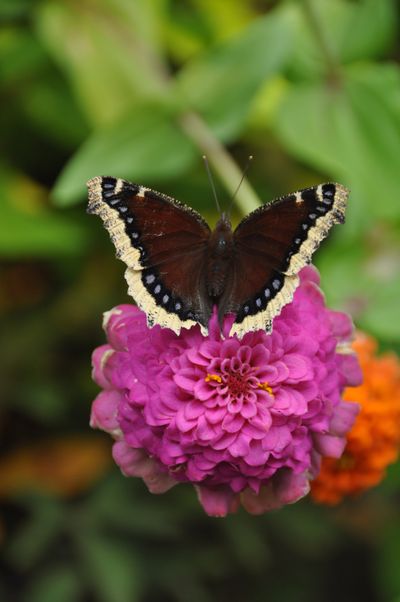Gardening: How pollinators work and thrive in our gardens

Recently, I took a break from gardening and sat down in a chair near my mason bee colony.
It was quiet and the only sound I heard was the hum of the bees coming and going. Many of them were covered with yellow pollen. Others were carrying daubs of mud to build out their nest tubes. They landed at an open tube and slipped quickly inside to continue building nests for next year’s crop of bees.
The pollen serves as the food source for the larvae while the mud divides the brood chambers and plugged the entrance to the tubes.
Blue orchard mason bees are just one of the important pollinators with which we share our gardens. They are about the size of a large fly, with iridescent blue and green colorings. They are solitary bees that are a more efficient pollinator than honey bees.
They come out in early April and are gone from the environment by mid-June. Their cousins, the leafcutter bee, take over pollinating duties in late June through the end of the summer. Instead of mud, leafcutter bees build their nests out of circular pieces of leaves. If you find perfect half-circle holes in leaves, you have these helpful pollinators.
Who else provides pollinator services in our gardens? The list is long; the native bees mentioned above, honey bees, butterflies, hummingbirds, moths, flies, ants, beetles and bats all play a crucial role in pollination. Basically, any time an insect or an animal sips nectar from a flower, they pick up pollen and move it to the next flower. Some are just more efficient at it than others.
How do we make our gardens a welcoming place for these keystones of ecology? The list of specific plants is long, so here are some guidelines to narrow the choice.
Each insect or animal has its own way of accessing nectar from a flower using color, shape and scent to identify their targets. Some have long tongues that can reach deep into deep tubular flowers. Others have short tongues that can reach into shallower flowers. Bats are not common pollinators in our region, but they are important pollinators of plants in our southwestern deserts.
Bees of all types prefer flowers with short nectar tubes or no tubes in shades of yellow, orange, purple or blue. They prefer open single-petal flowers in contrast to double-petaled ones which make it harder to get to the nectar tubes.
Butterflies like to perch on flat, open flowers and sip nectar and warm their wings. They favor flowers in shades of pink, red, white, yellow or purple . Yarrows, chives and members of the carrot family are good choices for them in the garden.
Hummingbirds are drawn to flowers in bright shades of red, purple and yellow that have deep, tubular flowers into which they can easily get their long, narrow beaks. Plants such as columbine, sunflowers, salvias, bee balm and delphinium are attractive to them.